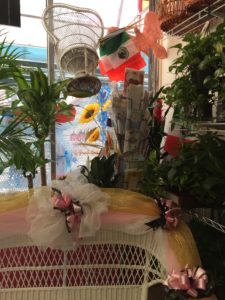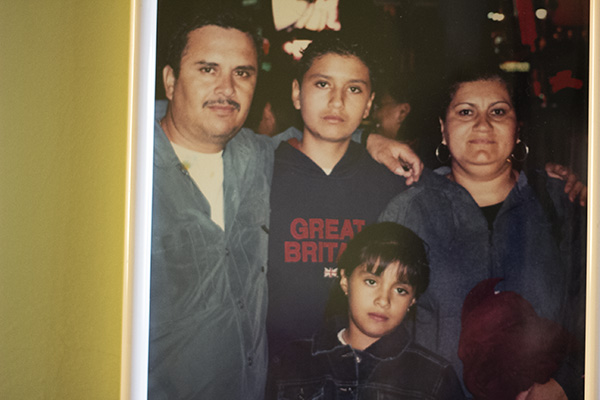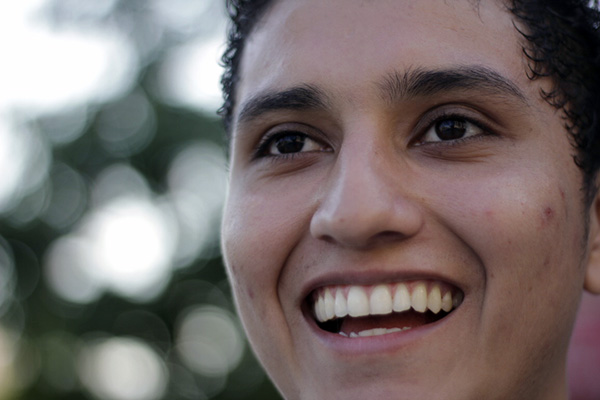One August weekend, a dozen 18- and 19-year-olds filed into a large, former industrial building in the South Bronx for a class on how to better manage their money. Once a factory where pennies were minted and paper money was printed in the early 20th century, the landmark Hunts Point BankNote building found a new purpose in 2014 when it was converted into office spaces.
And for two full summer days, an entrepreneurship incubator inside the former money factory became a boot camp about the 21st century’s answer to currency woes: cryptocurrency, a form of digital currency that allows people to make financial transactions without using a bank.
Cryptocurrency allows individuals to make peer-to-peer transactions whose authenticity is verified by a network of computers rather than a third-party institution like a bank. People using cryptocurrency can use digital wallet apps to pay for goods and services.
It’s often heralded as a solution for developing countries where banks are scarce, but Morrisania high school teacher Carlos Acevedo argues that the cryptocurrency industry could have just as much impact closer to home.
“My point of view was that you don’t need to go that far,” said Acevedo, who lives in the suburbs of New York and has taught English in the Bronx high school for the last seven years. “You’re four miles from the World Trade Center, and this is the unbanked right here.”
Acevedo hopes that the technology can help Morrisania and East Tremont, where 28 percent of the residents don’t have bank accounts, according to a 2013 study from the Urban Institute. That can mean paying additional fees when cashing checks or paying bills, and a higher likelihood to turn to predatory lenders in times of financial difficulty.
The Bronx has adopted cryptocurrency faster than almost anywhere else in New York because banks are so scarce, said Leighton Banton, a program assistant at BXL, an entrepreneurship incubator inside BankNote that hosted Acevedo’s class for the weekend.
“There are so many corporations that say they can’t make their way out here,” Banton said. “But I see people using Bitcoin ATMs all the time. They have more faith in the cryptocurrency than in the actual financial systems we have.”
The idea for this crypto boot camp came two years ago when Acevedo realized that even his most diligent Advanced Placement English students knew nothing about managing their personal finances. Many of his students’ parents had no bank accounts.
He began teaching voluntary classes after school hours to help them learn about bank accounts, credit cards and money management.
“Eighty to 90 percent of my students will have talked about having to send money home to family members,” said Acevedo, “or not being able to have a credit card, or having to pay money to get to a bank branch because they don’t have one near them.”
Acevedo said that in addition to a lack of financial knowledge among his students, there’s a noticeable absence of banks in the Bronx. In the four-mile stretch that he commutes every day, from Fordham University to the high school he teaches at in Morrisania, he barely sees any branches.
Despite more than two dozen ATMs, there are just six bank branches in his corner of the South Bronx, including one municipal credit union. Even other South Bronx neighborhoods are better served than Morrisania: Pelham Bay has 10 bank branches, eight of which are only a few hundred meters apart. By comparison, Manhattan’s Upper West Side has 38 branches.
“People get the short end of the stick and they don’t know what to do,” said Tashima Lee, one of the boot camp’s attendees and a former Acevedo student who became interested in cryptocurrency after one of the teacher’s financial lessons. “And they end up spending money because they burn it in a flash.”
For South Bronx residents, it made sense to find alternative ways to make essential financial transactions – like cashing a salary check – that didn’t involve paying to take public transport, or relying on restrictive opening hours.
Cryptocurrency provides a different way for South Bronx residents to make their financial transactions where banks are most scarce; despite the short time that the technology has been around, there are already seven cryptocurrency ATMs in Morrisania alone.
As a part of his education initiative, the Crypto Community Project, Acevedo rounded up eleven industry leaders from national firms including the Electric Coin Company and Gemini to speak to his former students about cryptocurrency and blockchain technologies (which underpin the security of cryptocurrency transactions) for a two-day boot camp.
In addition to lectures, the class gave students the chance to put theory into practice, using a digital wallet to purchase ice cream at the local ANC theater.
Leighton Banton said Acevedo’s initiative means that Bronx residents have a chance at becoming active participants rather than just consumers with cryptocurrencies.
“There are so many corporations that say they can’t make their way out here,” Banton said. “But I see people using Bitcoin ATMs all the time. They have more faith in the cryptocurrency than in the actual financial systems we have.”
Banton said Acevedo’s initiative means that Bronx residents have a chance at becoming active participants rather than just consumers with cryptocurrencies.
“Black and brown Bronx kids can get a $100,000 job without college if they apply themselves to this,” said Banton. “I know that someone from that program is going to be a millionaire one day, because of something they learned here.”
Jemima Joseph, an 18-year-old former Acevedo student, said that while she hadn’t spent the cryptocurrency during the workshop, she sees the potential it offers for when it comes to sending money to family outside of the U.S. She hopes that one day it will make it easier and cheaper for her to send money to relatives in Togo and Nigeria.
“This isn’t a short-term accomplishment,’ she said, when asked what the practical use of cryptocurrencies to her now. “It will take a while, but I see it gaining momentum.”



















